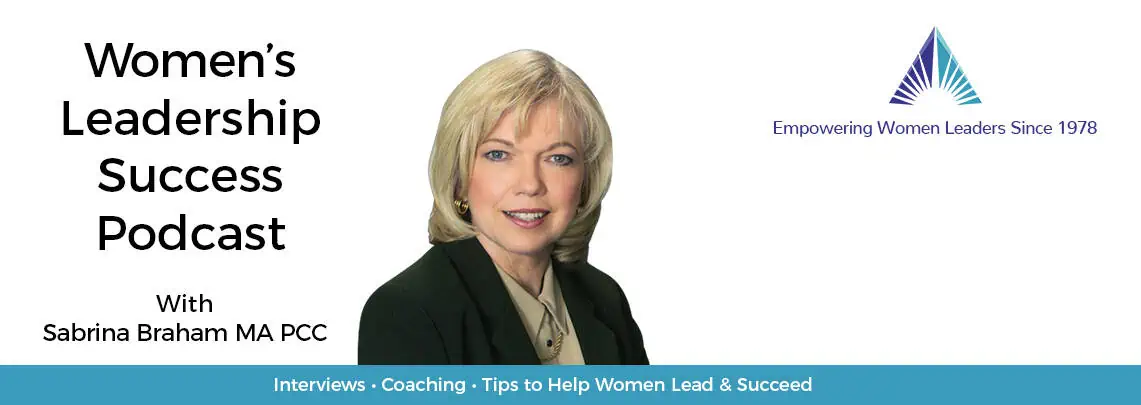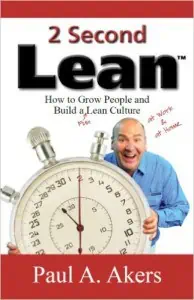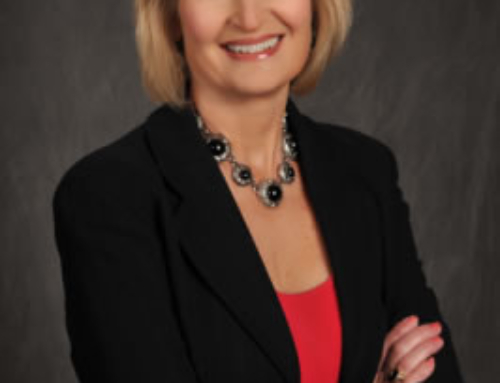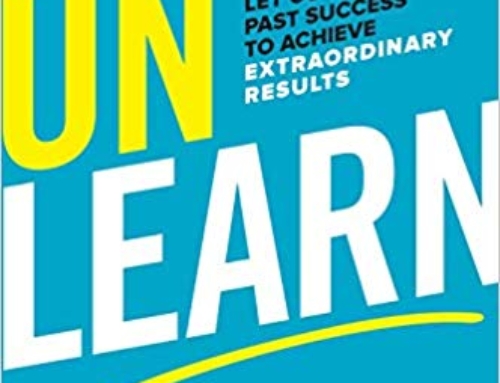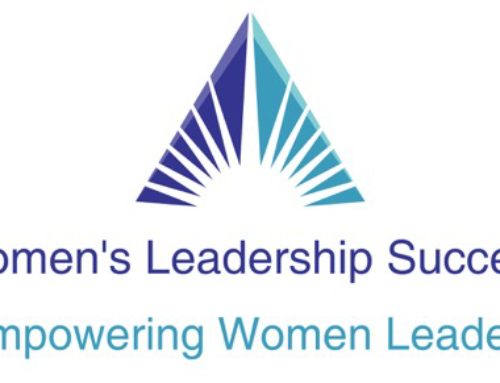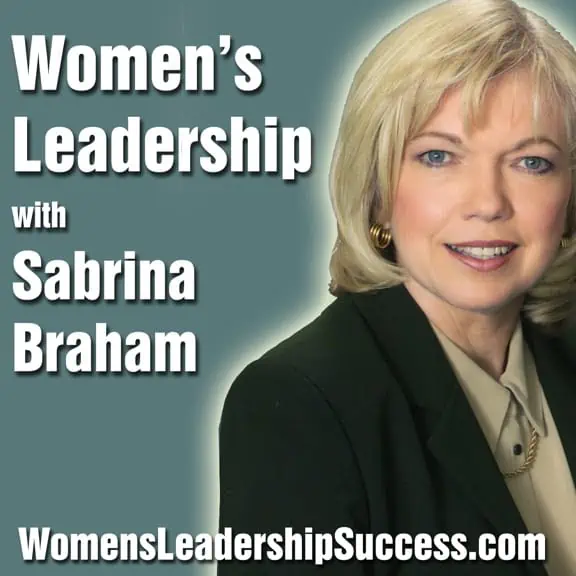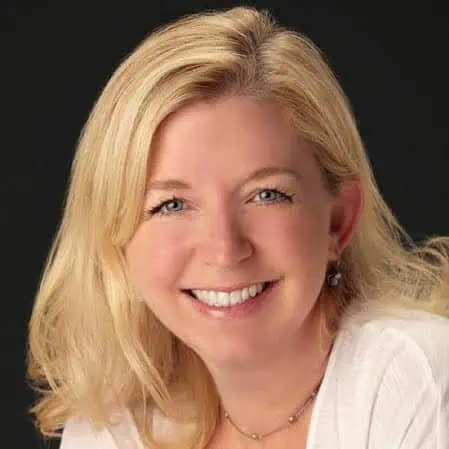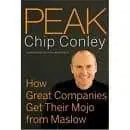Paul Akers 2 Second Lean Interview Transcripts
Listen to Paul Akers Interview here
Sabrina Braham: This is WomensLeadershipSuccess.com Radio Episode #75. Today I’m super excited to introduce you to Paul Akers, the author of 2 Second Lean. Paul Akers is the founder and president of FastCap based in Bellingham, Washington. It’s an international product development company that he founded in 1997. He has over 2,000 distributors worldwide and he is a prolific inventor. He has launched approximately twenty new innovative products a year since 1999. Welcome, Paul.
Paul Akers: Thank you so much, Sabrina. I’m happy to be on the show.
Sabrina Braham: Thank you. I wanted to say a little background. About ten months ago, the co-president of The Modal shop whose name is Tony Boeing told me that he had heard you talk at Gazelle and had read your book and was going to start implementing it in his company.
Paul Akers: Wow!
Sabrina Braham: And when I read the book, I was really excited because the thing I liked about it was it was ideas that you could put into use immediately, and I began to suggest it to people in different companies and they began using it, and as of now, I know of a thousand people in different companies that I work with that are actually using 2 Second Lean.
Paul Akers: Is that exciting or what?
Sabrina Braham: It is exciting, and so the questions that I’m asking you, I want the audience who’s listening to understand the background of what lean is, and we’ve got lots of people that are listening that are already using this that have asked some specific questions for you. So for the audience who isn’t familiar with 2 Second Lean, could you talk a little bit about what that is?
Paul Akers: Absolutely, so I’m setting my stopwatch right now because I’m going to give you the 60-second definition. So all you need to know is this 60-second definition and you understand Lean from start to finish. Are you ready?
Sabrina Braham: Ready.
Paul Akers: Okay, starting the stopwatch, Lean is the ability to see waste in everything you do, so this is how it works, everything you do in life is a process. How you brush your teeth is a process. How you get ready in the morning is a process. How you put on your makeup is a process. How you find your car keys is a process. How you answer your emails is a process. How you do invoicing is a process. How you communicate issues with your customers every day is a process. How you manage your health is a process. How you eat is a process. How you cook is a process. Everything is a process. Now, all day long we’re performing processes. From the time you start a specific process, let’s say brushing your teeth, to the time you complete brushing your teeth, inside that start and stop and finish point of that is waste.
There are elements that add no value. The only value that’s occurring when you brush your teeth is when the bristles is touching your teeth, everything else is non-value. When you’re taking toothpaste and you’re applying it to the brush, it’s non-value added activity. When you’re lifting the toothbrush to your mouth, it’s a non-value added activity. Only at the moment that the teeth are becoming clean by the bristles scraping the debris off it, that is value. So most of what we do all day long is non-value added activity. We spend a lot of time in excess motion over processing, all kinds of waste waiting over processing with the same things over and over again because people don’t understand them, whatever it is.
So all we’re trying to do is eliminate the waste from the starting point of every process to the ending point and eliminate that and make it smaller, more efficient and recapture all the waste of resources that are involved in any process. That’s all Lean is. That’s it. It took me two minutes to really say that, so it took me a little bit longer, but I timed it.
Sabrina Braham: That’s really great, and as I’m listening, what I’m wondering is, yeah, but is it going to make life so miserable now that I’m having to watch how I’m putting the toothpaste on and doing all this stuff? How does it get implemented that it’s actually an enjoyable process? I know it is, because I’ve got a lot of people doing it.
Paul Akers: Right, right. Well, you know not only it doesn’t make it miserable, but it just floods your life with joy. I mean, you become overwhelmed because everything in your life gets easy and you’re not struggling anymore and your mind is engaged and you’re playing this gigantic game. It’s a search and find ways and eliminate it, and all of a sudden, all these resources that were being tossed to the side and in the gutter and flushed down the toilet, you’re recapturing it and you can use for other value-added activity, whether it be time, whether it be water, whether it be wasted packaging, whatever it is, there is so much waste going around in our life, it’s staggering.
So that’s all we’ve done at our company. We’ve taught our people how to see the eight wastes and eliminate them every day by making small little improvements and our people are so happy and so engaged that the first thing people walk into our facility and say, “How come everyone is happy?” Well, because they’re engaged, they’re using their brain. They’re actually adding value to their life and to the lives of our customers. It does just the opposite of making your life miserable, it makes it grand.
Sabrina Braham: I love it and I agree with it. So what are eight wastes that plague us, and I just want to mention, you have the best website I have ever seen. You’ve got at least 150 videos that you can look at to watch these processes and explanations of things.
Paul Akers: Yeah.
Sabrina Braham: So just mention the website name before you explain the eight wastes.
Paul Akers: Yeah, the number 2 Second Lean, that’s it, and you will find me there. There’s a picture of me right on the home page. Everything is free. I mean, we’re so generous, we’re trying to teach this to the world, and we are teaching the world. You couldn’t go in a country in the world that someone is not doing 2 Second Lean. I mean, literally, everywhere in the world.
Sabrina Braham: Oh.
Paul Akers: I just got back from Mercedes Benz, they’re doing it. I’m in Kazakhstan all the time. I’m in Thailand all the time. They’re doing it in China, and even Singapore. It doesn’t matter where you go, people are doing it everywhere around the world, Australia, New Zealand, all throughout South America. The biggest companies in the world, Coca-Cola, Bombardier, Boeing, you just can’t name a company. Amazon, Amazon is like a 2 Second Lean maniacs.
Paul Akers 2 Second Lean Tips – Continued
Sabrina Braham: Yeah, and do you know why? Because it works, that’s what so amazing, this stuff works.
Paul Akers: Yeah.
Sabrina Braham: What are the eight wastes?
Paul Akers: Okay, and it’s so simple, I’m going to tell them to you in a story because this is the only way to understand the eight wastes. You cannot memorize them. You have to understand them, and if I tell you in a story, you will understand them and never forget it.
So I like to tell the story of making a salad. So you’re having a party at your house and there are four people attending, so you go to make the salad, and you make a little bit too much salad, so you’re making a salad for six people, but there are only four people at the dinner. So your first waste is you overproduce. That is the mother of all wastes. The minute we make too much of something, then all the other wastes start coming into play. We overproduce, we make too much.
So we made too much salad, we sit down at the dinner table, we eat. At the end of the dinner, we look at the salad bowl and we go, “Oh, we have extra salad.” So what do we have to do with that salad? We have to do the next waste, we have to transport it. So now, we’ve got to transport that salad back to the kitchen.
Now, it’s in the kitchen, what do we have to do with that salad that’s in the bowl in the kitchen? We have to put it in the inventory, so now we open up our sub-zero refrigerator and because we overproduced when we buy too much food, we don’t buy food just in time, we buy way too much, half of it rots in our refrigerator, we all have this problem.
So now, we’re buying these huge refrigerators that are using more energy, more consumption. I have one of these refrigerators, so I’m poking fun at myself right now. I have the big sub-zero refrigerator. So now we open it up and we put it in the inventory.
So first, we overproduced too much salad, then we transported the salad back to the kitchen, so that’s waste, and now we’re putting it in inventory. We’re putting it in the refrigerator and now we’re burning more energy. I mean, it just goes on and on and on, it’s crazy what happens there.
So now we’ve got the salad in inventory, then three days later, we go to open up the refrigerator, we come home late at night from work and we look in there for what’s good to eat and we see a bowl with some Saran wrapper at the top of it and we pull the bowl out and we lift the Saran wrap off and we look at that salad and it doesn’t look very good. It has a defect. That’s the fourth waste, we have a defect.
So, whenever we overproduce something, inevitably something is going to get a defect in it, and it’s going to be kicked around our shop. It’s going to be put into inventory. The forecast is 00:09:44 going to hit it. It’s going to go into the refrigerator. The salad is going to wilt. It’s not going to be very tasty.
So now we’ve got a defect. We pull that thing off the rack. We pull it out of the refrigerator. Whatever you want to call it, you pull it out and now we have to over process. There is the fifth waste, we have to over process. We have to do something to it that we didn’t do. We would just produce what we needed, when we needed it.
In case of a guy, you’re going to put Ranch dressing on it. If you’re a woman, you’re probably going to scrape it out because you’re more discerning than guys. Guys will eat anything, we are bunch of garbage disposals, and you’re going to scrape that into the trash. You’re probably not going to eat it, so now you’re wasting motion.
The fifth one is over processing because we got to add more salad dressing or we have to put it in the trash and then in the process of doing that, we have motion, there’s number seven, so we’ve got a lot of excess motion, and then meanwhile, our spouse is waiting for dinner, they’re waiting, but we can’t feed them dinner because we’re doing all this stupid work because we overproduced, so we’ve got this waste stream carrying on and taking care of this salad that we overproduced, so they’re waiting.
Then the last one is number eight, and we’re wasting our potential as human beings because we were made to do fantastic things, to develop, invent and create all kinds of wonderful things, but the preponderance of our life is caught up in doing incredibly, stupid work because we overproduced everything we do in life, and so we’re caught up into this waste vortex and we’re not using our potential. Those are the eight wastes in making a salad.
Sabrina Braham: Wow! It’s such a great word picture, and you’re right, I won’t forget that. That is so beautiful.
Paul Akers: You can’t. It’s so clear if you understand it, and here’s the beautiful thing, once you see wastes, you can’t unsee it. Once you learn this concept, you can’t unsee it. For the rest of your life, you would go, “Oh my gosh, look at the waste there,” and that gives you the power now to make change and to improve.
Sabrina Braham: Beautiful. But you talked about the 24/7 waste generator, what is that?
Paul Akers: Well, that’s all of us, we’re all 24/7 waste generators.
Sabrina Braham: Okay.
Paul Akers: I’m the king of all of them. Every human being on the earth just generates waste like it’s going out of style, but none of us think of it that way, none of us realize that that’s who we are, but we’re all that way. I’m like the Lean guru. I travel all over the world. Everybody knows who I am. I walk into any place I walk into, everybody will be, “Oh, Paul Akers.” I’m the worst of all. I generate so much wastes it’s staggering, but it doesn’t bother me because I’m not like mad at myself. I just look at it as an opportunity to make my life better and improve, and every day my life gets better.
So everything we do in life is just generating waste. It’s just part of the way it works. I don’t know how else to put it. The best example I’d like to give, and I’ve never said this in an interview before, but I’m going to say it now because I think it makes perfect sense, you think of human beings what we do whether it be flushing the toilet, whether it be washing our dishes. Whether it be mowing our lawns, we open the fertilizer bag and then we have to put the fertilizer bag in the trash and then it has to be taken to the trash for the recycler, all the things we do, all humans do is generate wastes. I mean, it’s crazy how much we generate, and I’m not downing humanity at all.
I mean, we’re smart people. We’ve created a great life ourselves, but if you’ve ever walked into nature, like I’ve been all throughout Africa, and I’ve been on many, many safaris, there is no waste in the savannah, in the wilderness. If you think about it, a lion goes and kills a gazelle, and he eats as much as he can, and then the next thing you know the hyenas come and they eat more, and then the next thing you know, the buzzards come and they eat more. Everything composted down to nothing, the savannah grows and enriches. There are no refrigerators in Africa. There are no refrigerators out in the bush in Africa. It’s like it’s the perfect system. It’s really incredible when you observe nature how it’s absolutely efficient.
Sabrina Braham: I love it. Can you point out the difference between the 2 Second Lean? A lot of companies have done lean programs, but the 2 Second Lean seems to be something that is one can really get engaged in. Can you talk about the difference there?
Paul Akers: Yeah, it’s easy because, like I said, I have my stopwatch set, it took me 00:01.59.26 to tell you what Lean is. The difference between 2 Second Lean and the reason why it spreads around the world, and we have corporations like Coca-Cola and Boeing and Amazon and FedEx, and you just can’t name a major corporation that’s not using it, right? It’s because it’s simple. Because it doesn’t take a consultant to understand it, you can explain it to anybody.
When Coca-Cola bought 600 books from us, we called them up and said, “Why did you buy 600 books?”
They said, “It’s very simple, the CEO totally gets what you’re saying, and the starting janitor totally gets what you’re saying. Everybody understands what you’re asking us to do.”
So everyone can do it. That’s why 2 Second Lean is so powerful. I took a concept that typically would have been very complicated, and most people make it very complicated with value stream mapping with A3s and all the Japanese terms and everything else, and I know them all. I’ve done them all. I know all this stuff, and they had made it so complicated that people’s eyes just glazed over and say, “I’ve got work to do. I don’t have time to do that.” And all we’re saying is to see waste, fix what bugs you, do it every day and then go to work. That’s all we’re saying.
Sabrina Braham: Beautiful.
Paul Akers: It’s that simple.
Sabrina Braham: But Paul, in your book, you talk about visiting… is it the Hoks Company in Japan?
Paul Akers: Yes, right.
Sabrina Braham: Would you tell what happened, the surprise that you got when you walked in there?
Paul Akers: Well, there are so many surprises at Hoks. I think the first thing when I drove up to the building, it was not a very pretentious place, but it was pretty simple looking. It wasn’t this big, fancy, sophisticated-looking company, so that was probably the first thing that struck me.
Sabrina Braham: Maybe we should back up and say why you were at the Hoks, what did you want to learn there?
Paul Akers: Well, I went there specifically to become an expert at lean, because once I learned the power of lean in my own company, I was so blown away by the results because as I tell the story in my book, I mean, we were rock and roll a good company. We won Business of the Year. Everybody wanted to work for us. We were making some money. I mean, everything about our company was great. I mean, anybody that looks to our company would say this is like one in a million. This is very unusual.
Then we have lean consultants come into our company and they basically walked around and they told me that I was clueless and I didn’t have a clue what I was doing, and I was going, “What? I’m like world class.”
And he goes, “No, no, no, you are clueless.”
And I said, “Really? Well, what would I need to do?”
And they said, “You need to learn the TPS system, the Toyota Production System, Lean Manufacturing or Kaizen.”
I had no clue what those words were, and so I said, “What do I have to do to learn it?”
And they said, “Well, you can hire these young kids from Japan.”
Brad and John were my first consultants that I hired, and they came into my company, I paid them $10,000 a week, which is a ton of money. I didn’t have $10,000 a week to pay for consultants. Those were outrageous numbers. I didn’t even know consultants made that kind of money, right?
Sabrina Braham: [Laughs]
Paul Akers: But I knew I needed to learn what they were telling me. I don’t know why, but my gut just told me. My wife didn’t want to do it. I talked her into it. She’s very fiscally conservative, and I’m conservative too, but she’s maybe more conservative than I am, but I said, “I’ve got to learn this.”
So I hired these two kids to come in. They took processes that I had set up. I’m a manufacturing expert. I know what I’m doing. I mean, I’ve really been around the block here. They took processes that I had set up, and my factory was immaculate. It was perfect. Everything about it looked awesome. They took it from 45 minutes to 5 minutes in one week. So they took my processes I thought were great and then it was taking me 45 minutes to perform, and in one week, they did it in 5 minutes.
Well, I felt like a buffoon. I felt like an idiot. I felt like, “Oh my gosh, I am so far off the bench, it’s unbelievable, and that’s what they told me is that basically you’re clueless, and they were right. I was beyond clueless.
Sabrina Braham: [Agrees]
Paul Akers: So when I found that out, Sabrina, I wanted to find out more about lean. I really wanted to like go to where it was all developed, even though it’s all an American idea and the Japanese just perfected it. I went to Japan, and then Brad and John offered a trip to Japan. I went there to go to Lexus, to go to HOKS, to go a variety of different companies that were very effectively implementing lean, and HOKS was one of them, and HOKS made the biggest impression on me than any company that I’d ever been to. So that’s why I was there. Now, do you want me to tell the story at what happened at HOKS?
Sabrina Braham: Yes, yes.
Paul Akers: So we pulled up in a bus. It was a very unassuming place. You can see a picture of it in the book that I wrote, and we were all there in our business suits and everything, and we walked in, and the first thing they did, they made us students clean their facility. It was crazy. I was down with my hands and knees scrubbing the floor with the president of the company on my hands and knees, and I was pissed because I was saying, “This is the stupidest thing in the world. They have four cleaners for doing this. Why in the world is he doing this?” But that’s what we were doing, and everybody in our tour was cleaning the windows, cleaning the bathrooms, cleaning the toilets, cleaning the floors, and I happen to be right with the president of the company doing it.
So at the end of the day, what I realized is he was trying to teach me humility, that if you really want to be a great leader, you’ve got to get down on the shop floor with your people and work with them shoulder to shoulder. You can’t lock yourself up in an office, and if you do that, you’re going to have a great company, and so that was the first thing I learned from Hoks.
The second thing I learned from Hoks was the concept of 3S instead of 5S, so all lean practitioners that I know over the world do something called 5Ss (sweep, sort, standardized, sustain and self-discipline). Well, Hoks took the two, the self-discipline and sustain out of the equation and they said, “We don’t need to remember those two because we’re going to do 3S every day for the rest of our life.”
So it’s automatic, so why should we even bother trying to remember something that I’m going to do by default. It’s so important to 3S. So every morning in our facility, we walk and we polish the facility. If you walk into FastCap, it is the cleanest company in the world. There is nothing nowhere, no place, Disneyland looks like a pigsty compared to our place, okay?
Sabrina Braham: [Agrees]
Paul Akers: So we polish our facility every day, it’s immaculate, then we sort, we get rid of any crap that’s lying around anywhere. There is no clutter anywhere. It’s gone, and then we create standards so this morning in my desk drawer, I had a couple of extra microphones that I needed to cut. So instead of just throwing it in my desk drawer, because 99% of all desk drawers in the world are total pigsties, you open up my desk drawer, it’s perfect. It’s all set in Kaizen, and boom, everything has a place. I have one pen. I have one highlighter. I have one pen so I don’t have a pencil jar. I only have exactly what I need. I didn’t overproduce, so I don’t have to manage all the inventories of a pencil jar on my desk. I open my desk drawer, there’s one highlighter, there’s one pen, and there’s one pencil. Do you see how simple it is, so I create a standard, so we do that 3S every day, then we meet as a team, and this is what HOKS taught us, every morning they met as a team, they stretched, they talked about the goals were for the day. They met as a team, a hundred people.
We’re going, “Wow, this is crazy. Do you meet every day?”
“We meet every day. We 3S every day.”
I go, “And this is the essence of lean, and basically that’s what the president told me, “This is the essence of lean, you come in, you 3S your facility, you meet as a team, you make small improvements every day and you go to work. That is what happens at HOKS.”
I’ve never seen anybody reduce it down to such a simple concept that I was like, “I can do this.” That was I said a minute ago, “I can do this.” Every other place I ever went in there’s Lean, I go, “How would I do this?”
Sabrina Braham: That’s beautiful.
Paul Akers: That’s what happened at HOKS.
Sabrina Braham: That’s a great story, and because I’ve got a lot of different companies using this, one of the challenges in some place is that some people just do lip service and won’t actually do it. What do you do with that? In other words, somebody is saying, “This is what bugs me, and this is what I’m going to do,” and another person is daily saying, “I’m going to sweep my area,” or something they’re not really doing, they’re just kind of giving lip service. How do you deal with something like that?
Paul Akers: Okay, well, here’s the honest answer. Some of your listeners, they’re going to start hating me right now.
Sabrina Braham: Okay.
Paul Akers: But I’m going to be honest with you, okay? Paul Akers, I have on my board right now, literally on my wipe-up board from my leadership training, this is what I have, I have a scale of 1 to a 100, and the first part of my scale goes from 1 to 70, and what you need to do to be a great leader from 1% to 70% is you need to be a trainer and a teacher, so 70% of everything I do in life is teaching and training. So if you want to be a great leader, you need to be a teacher and a trainer 70% of your time. Okay?
Sabrina Braham: Okay.
Paul Akers: Then 20% of your time, you need to be a nice guy. Okay?
Sabrina Braham: [Agrees]
Paul Akers: That means, you’re a friendly guy, I’m a friendly guy. Most people who are listening to me right now, like they sound a friendly guy, right?
Sabrina Braham: Right.
Paul Akers: I am a friendly guy. I love people. I love supporting people. I love encouraging people. So we’ve got 70% teacher and trainer. We’ve got 20% nice guy, but we’ve got 10% left over. What do you think that 10% is?
Sabrina Braham: Mean.
Paul Akers: I’m an asshole. That’s what I have on there. I will be a real asshole to you. If you don’t get it and you want to drag your feet and you want to disrupt the implementation of the greatest business philosophy the world has ever known, you are going to come against one difficult person.
So the answer to your question is I am going to train you like crazy, I’m going to be a really nice guy to you, but if you decide you don’t want to do this, you’re not going to work here.
Paul Akers 2 Second Lean
Sabrina Braham: Beautiful. I love the answer. I love the answer and I’m wondering back to the train part. When people are saying what they’re going to do for the day, is it really important to follow through where you’re going around and seeing what they did. Does that help them to get more engaged?
Paul Akers: Oh, absolutely. One of our most popular videos that have like 70,000 or 80,000 or 90,000 views on the internet is called the Morning Improvement Walk. Everybody wanted to know, “How did you get all your people to do this?” Well, every morning for two years, I walked through my entire facility and worked with every person during the 3S process and helped them understand what 3S was. So I really trained them in a high level. I was there and put my arm around them saying, “Hey Bob and Mary, this is what’s going on. Do you need help? How can I help you you’re your improvement?” And everybody understood it, but I did that for two years.
Now, I don’t have to do that anymore because our people are so well trained, but the truth of the matter is I’m always on the shop floor. I don’t have an office, so all I’ve done all day long before this interview was I was on the shop floor with my people all day long. There is no office for Paul Akers. I’m always on the shop floor with them, so I’m always teaching and training. I’m always being the nice guy.
To be honest with you, for me the asshole equation is about like 1%. It’s really not 10%, but with some people it might. It’s going to have to be 10% to start with. I rarely have to be difficult with my people, rarely, because they get it.
Sabrina Braham: That’s beautiful. I really liked what you’re saying there. Now, a lot of the people that are using this are not production workers. They’re in offices or they’re out like claims reps. One company is Farmers Insurance. Eric Sigg is the director of the West Zone for Auto.
Paul Akers: Right, okay.
Sabrina Braham: He has 600 people doing this who are claims reps.
Paul Akers: Isn’t that awesome?
Sabrina Braham: And yes, it has really changed employee morale because people are getting to say what bugs them. It’s been huge, but do you have any suggestions? Is there a difference when it’s like claims reps or office people as opposed to production people in terms of …
Paul Akers: No, no, and first of all, I just got to give a call out, and you say the guy’s name is Eric?
Sabrina Braham: Eric Sigg.
Paul Akers: Is it Eric Sigg? I just wanted to just say it. Eric Sigg, you’re a genius. Eric Sigg, you’re my hero. Eric Sigg, you’re one of the most amazing leaders I’ve ever heard of in my life because most people in Eric Sigg’s position would make up every excuse in the world why it would not work because they’re not manufacturers. Eric Sigg, you are amazing. That’s all I can say, okay?
Sabrina Braham: I agree, and thank you for that. So it’s all the same.
Paul Akers: It’s all the same because that’s how I said in the beginning. I mean, it’s all a process. It doesn’t matter whether or not you’re a claims process or whether or not you’re a manufacturing process. All you’re doing is performing all these tasks all day long. It doesn’t matter. Everything you do in life is a process. You’re just trying to eliminate the wastes, fix what bugs you and do it in a disciplined way every day for the rest of your life, and guess what happens, every day you get up, your life is better than the day before. That is the critical component. Every day you get up, it’s better than the day before if you do this.
Sabrina Braham: Now, this is actually a question for Eric. Is it possible that it becomes obsessive? Does it get to a point where, you know?
Paul Akers: Well, most people would say I’m that. Here’s what most people would say about me, “Wow, you’re a fanatic. I want your life.” Everybody says it to me. The very first thing people say to me is, “I want your life. I can’t imagine what it would be like to have a life like yours.”
I can do anything. I can go anywhere. I have total freedom. My people are awesome. I have people around the world that are calling me nonstop. My email will not stop with people saying, “You’ve changed my life.” Who doesn’t want that? If that’s a definition of obsessive, I want to be super obsessive.
Sabrina Braham: That’s beautiful. Hey, I’ve got a question here from Mike Lawley who’s the founder and owner of the Modal Shop in Cincinnati, Ohio, another great person, and he says, “How do you keep team members engaged and positive when other team members continue to find deeper ways after the team members’ initial innovation, especially in engineering?” In other words, somebody is doing the group in the morning and somebody says, “This is what I’m going to do,” and the minute they say it, somebody else says, “Oh, well, you could do that even better.”
Paul Akers: Well, here’s the way, that’s very simple to actually answer.
Sabrina Braham: Okay.
Paul Akers: The key to eliminate all the tension and friction that’s involved in that is to teach your people, again, one simple concept. Every improvement is on a criteria of four points, so it doesn’t matter whether or not it’s Paul’s idea or it’s Sabrina’s idea or it’s Mike’s idea. The only thing that matters is that the improvement fits this set of criteria, so it takes the personal aspect away from the idea that, “Oh, that was my idea,” and says, no, all we’re trying to do, all Mike is trying to do or Sabrina is trying to do and I’m trying to do is add value to the customer. We are doing what we’re doing to add value to the customer. We’re not doing it for us, we’re doing it for the customer, we’re in to serve the customer, and so if you get that big perspective, it’s not about you, it’s not about your ego, it’s not about you winning the award, it’s not about you getting the slap on the back, it has nothing to do with you. Get you out of the equation, it’s about the customer.
So if you first understand that concept, then we’ll talk about the four criteria for making improvement. The very first thing whenever you make any improvement, the most important criteria is safety. So in the manufacturing world, that’s pretty critical, so we’re not going to go make an improvement that’s going to save time and be faster if in the process, you are compromising safety and then somebody can get hurt because then if somebody gets hurt, that’s not going to be faster. That’s going to actually cost a whole bunch more time and be chaotic. So we always want safety to be the number one guiding principle. Okay?
Sabrina Braham: [Agrees]
Paul Akers 2 Second lean Interview Transcripts continued
Paul Akers: The second one is quality, and this is the driver behind why we do Lean. We don’t do Lean for money. If you do Lean because you want to make more money, you have completely missed the reason why Lean should be done. The only reason you do Lean is to add an improved quality for the customer.
No better example than Southwest Airlines. Southwest Airlines is most successful airline in the world in the history of the world, and why? They fly more people than any other airline in the world every month. They’re not even the biggest airline in the world, but they have mastered adding value to the customer. They simplified the process by only flying Boeing 737. They simplified their process on maintaining the plane because all their mechanics can work on the same plane. All their pilots can fly the same plane. All their flight attendants can fly the same plane. They have all the same training manuals. Everything has been simplified and in the process of doing that, they can offer very affordable prices, quality for the customer and they turn their planes faster than anyone else in the world. They turn their planes in 22 minutes to 30 minutes.
It’s unheard of. Everybody’s planes sits there for an hour. So what they’ve done is they increased the value-added quality, the value-added activity for Southwest Airlines when the plane is flying through the air. There is no value when it’s sitting on the ground and you’re waiting to get on the plane. There’s no value. So the increased of quality for the customer drove down the costs, the first thing is in quality, and in the process it drove down the costs and the result is in the most successful airline in history of the world. So quality is number two.
The next thing is simplicity. You want to make everything simpler. When you make an improvement, if you make it convoluted, you add ten steps to it, that’s not an improvement. You want to subtract. You want to make it simple. Let’s look at HOKS, they took 5S and turned it to 3S. That’s an improvement. They simplified it, right?
So let’s talk about this. This is HOKS’s example. Was there any safety issue with them removing sustained and self-discipline? No, there was no safety issue because they’re doing 3S every day so there is no safety issue. That criteria is moot.
Did they improve the quality by making it 3S over 5S? Well, they did improve the quality because they said we’re going to 3S every day instead of once a week like most companies do. So they improved the quality.
Did they make the process simpler? They made it way simpler. Who can’t remember three things? Five things, a little difficult. Three things, it’s easier. They simplified the process.
Did they increase the speed in which the process gets done? I don’t know whether or not they did that or not. I don’t think really that criterion was met necessarily, but it doesn’t matter, it didn’t compromise the first three. They definitely got a better quality product and they definitely got a simpler product, so they met two of their criteria so it meets the criteria for making an improvement.
Did I make any sense with that, or does it confuse you?
Sabrina Braham: That totally, totally does. Totally, that’s a great example, and so what’s number four?
Paul Akers: So the four, the first one is safety and then quality, simplicity and speed or efficiency.
Sabrina Braham: Okay.
Paul Akers: So everyone thinks Lean is all about doing things faster and more efficient. It really is not. Lean is all about quality.
Sabrina Braham: It totally makes sense.
Paul Akers: And when you produce quality, everything is faster and more efficient, and people don’t believe that, but it actually is the case because when you don’t have a quality product, you have to rework it over and over again. That’s why most people like to buy Honda generators, for instance. That’s why Toyota is the most popular car in the world. That’s why when you go to Africa or any Third World country, the only car they drive basically is Toyota because it’s the only car that can hold up on the bad roads, so they buy quality, and the quality is actually cheaper than buying a cheap car, so they buy a cheap car in Africa, they would have to buy the cheap car ten times, but they buy one Toyota which is more expensive, but it actually cost way less because it just keeps running.
Sabrina Braham: Beautiful. I’ve got just two more questions here. This is a little more complicated question. This is again from Mike Lawley for the Modal Shop. How do you engage individuals in a team when you have quality control standard systems? How does a potential unanticipated defect of an untested change lead to bureaucracy and black holes that can deter workplace innovations?
Now, maybe we can translate that.
Paul Akers 2 Second Lean
Paul Akers: Yeah, yeah. Well, again, it’s the whole thing, Mike. You just want to simplify everything. You don’t allow those black holes. You can see or I can see those black holes a mile away, and so I’m just not going to let that happen, and the answer to the question is you go back to those four criteria and you evaluate every improvement based on that criteria, that’s the first thing you do.
The second thing, Mike, you’re going to do is you want to make sure that you don’t make a wholesale change in your company until it’s been thoroughly tested. So let’s say you have a hundred processes that you do every day in your company, and let’s say you’ve got a hundred people doing one of those processes. You’ve got a hundred people doing one of those hundred processes. I’m not going to go say, “Oh, let’s go ahead and make that change into this process and let’s get a hundred of them doing it all right now.”
Oh no, we’re going to have one person do that process and we’re going to have and do him day after day. We’re going to look at it. We’re going to evaluate. We’re going to make sure it truly is an improvement, and then we’re going to roll it out to two people and then we’re going to consensus, and then we’ll roll it up to three people, we’re going to get consensus. If everyone says, “Yeah, indeed, it’s a better way to do it,” and then we’re going to make a wholesale change.
Sabrina Braham: Beautiful. That’s a beautiful answer. Just about then, again the Modal Shop wants to know, are there latent forums or spaces where companies from different industries can exchange successes along the Lean journey?
Paul Akers: Oh, my gosh, yes, absolutely. Well, 2 Second Lean is the greatest lean forum in the whole world. So number one, we have a new thing on our website that was created by one of the Lean companies called Mission Bell down in San Francisco, a big cabinet shop, and they said, “Paul, you really need to have something on your website called Lean Hub where all Lean people around the world can go and find out other Lean companies in their near area so they could cross pollinate and collaborate and work together as a team.”
So if you go on 2secondlean.com, you’ll see a tab there that says, “The Lean Hub,” and you can find out other people in your area, and if you want to become part of the Lean Hub, you can sign up and say, “I want to be part of the Lean Hub. I want to help teach and train other people in my area so I can spread this incredible message of continuous improvement.”
So yeah, that’s the best way, and then we say, “Sign up for our newsletter.” Every week I send out a 2 Second Lean email to people all over the world and it’s videos that I receive from people all over the world who have made really cool improvements that will inspire you and keep you thinking about what Lean is really all about.
Sabrina Braham: Beautiful. Okay, the last question, and I have been dared to ask this to you by the crazy people from Modal Shop, and that is, what’s your favorite Duran Duran or YouTube song?
Paul Akers: Yeah, that’s funny that you would say that. So I would say, and it’s not necessarily commensurate with the way I believe, but I Still Haven’t Found What I’m Looking For, even though I have found what I’m looking for, but I love that song. It is like when I run in the morning, when I work out, I just love the beat of that song. It is just so incredible.
Sabrina Braham: That’s beautiful. Thank you so much for taking the time, much more time than I expected you to do, but we really, really appreciated it a lot. Thank you, Paul.
Paul Akers: Well, Sabrina, you’re a joy. I love your passion. I love what you’re doing to help people, and I’m all about connecting with other great people because when you surround yourself with awesome people, you’re going to have an awesome life.
Sabrina Braham: It is. That is so true. Thanks again.
Paul Akers: Anytime
